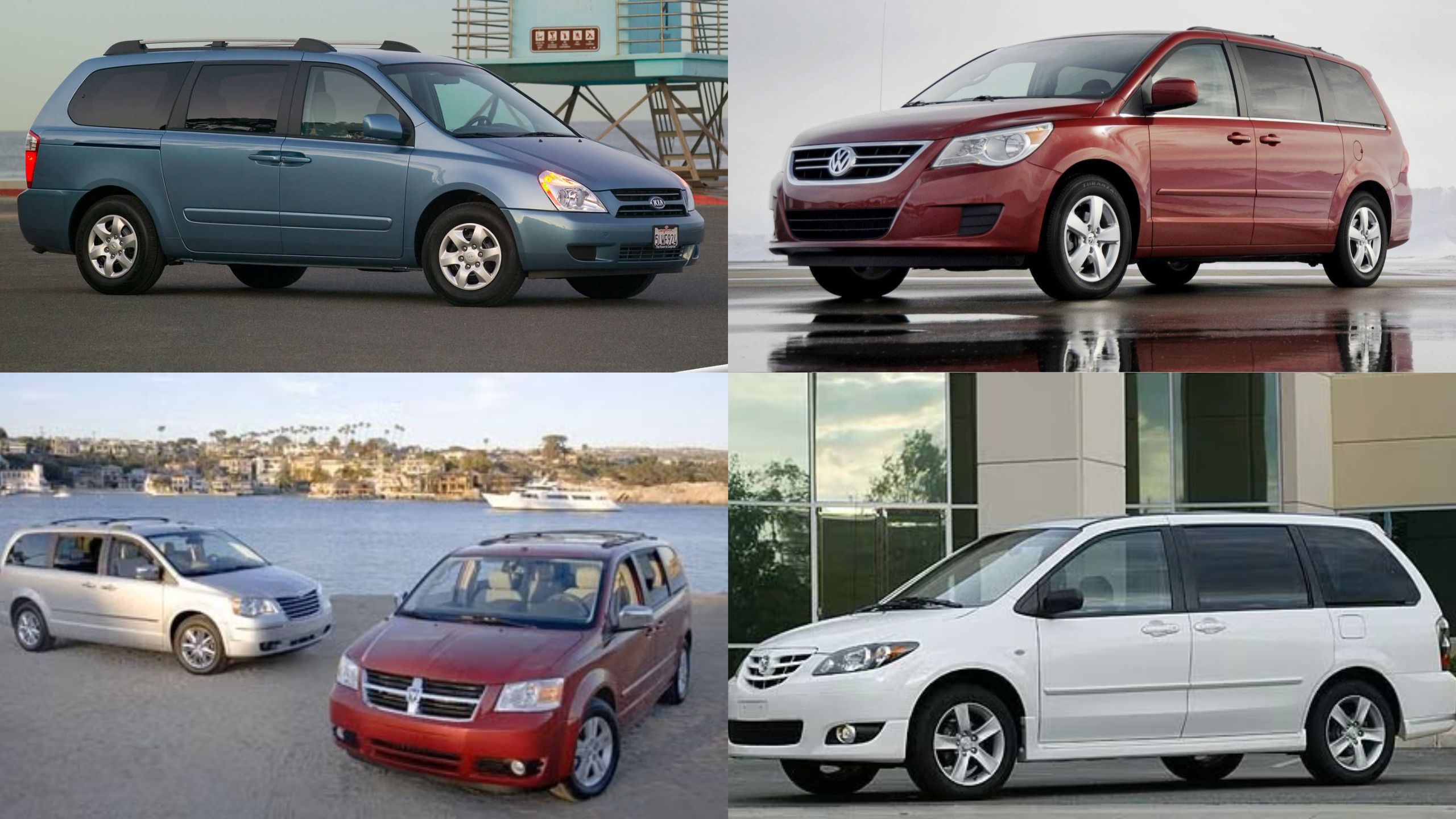Family vans represent the ultimate combination of practicality, comfort, and reliability for growing families. While modern vehicles often seem designed with planned obsolescence in mind, certain minivan models have built legendary reputations for longevity.
These workhorses continue performing their family-hauling duties well beyond the 15-year mark, often surpassing 200,000 or even 300,000 miles with proper maintenance. For budget-conscious families or those who prefer to invest in a vehicle for the long haul, selecting a van with proven durability makes financial and practical sense.
The following ten minivans have demonstrated exceptional longevity through robust engineering, quality manufacturing, and thoughtful design. These vehicles have withstood the test of time, enduring countless family road trips, soccer practices, grocery runs, and daily commutes while requiring minimal major repairs.
Their staying power isn’t just anecdotal it’s backed by owner reports, mechanic testimonials, and industry data. If you’re in the market for a family van that will serve your needs for many years to come, these ten models deserve your attention for their remarkable durability and reliability over the long haul.
1. Toyota Sienna (1998-2010)
The Toyota Sienna, particularly models produced between 1998 and 2010, has earned a stellar reputation as one of the most dependable family vans ever manufactured.
This minivan’s legendary reliability stems from Toyota’s commitment to quality engineering and the implementation of the bulletproof 3.3L V6 engine that powers most of these models.
The engine is renowned for its smooth operation and remarkable durability, with many examples easily surpassing 300,000 miles with basic maintenance. What sets the Sienna apart is its thoughtful design that prioritizes longevity.
Toyota utilized high-quality materials throughout the interior that resist wear surprisingly well, even after 15+ years of family use. The sliding door mechanisms often the first component to fail in minivans were engineered with exceptional robustness in the Sienna, avoiding the common issues that plague competitors.
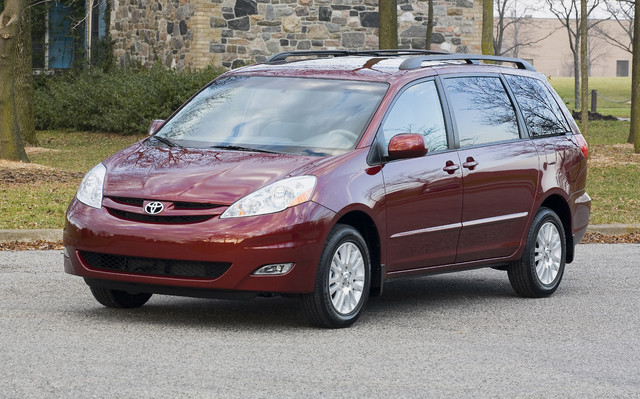
Maintenance costs remain reasonable even as these vans age, with parts widely available and affordable. The timing belt is one of the few major maintenance items, requiring replacement every 90,000 miles, but this preventative measure helps ensure the engine’s continued reliability.
Owners consistently report minimal issues with the transmission, another common failure point in aging vehicles. The Sienna’s rust resistance further contributes to its longevity, with proper undercoating that holds up even in harsh winter climates.
This protection extends the vehicle’s structural integrity far beyond what most competitors can achieve. The electrical system also demonstrates remarkable resilience, with few reports of the mysterious electrical gremlins that often haunt aging vehicles.
The first-generation (1998-2003) and second-generation (2004-2010) Siennas have proven particularly durable, with the 2006-2010 models representing the sweet spot of reliability, modern features, and value.
For families seeking a reliable van that will continue serving their needs through high school graduations and beyond, the Toyota Sienna remains the gold standard for longevity.
2. Honda Odyssey (1999-2004)
The 1999-2004 Honda Odyssey represents a golden era in minivan engineering, establishing itself as one of the most durable family haulers ever produced. This second-generation Odyssey sparked a revolution in the segment with its combination of car-like handling, innovative features, and exceptional build quality that continues to pay dividends decades later.
At the heart of this van’s longevity is Honda’s legendary J-series 3.5L V6 engine, renowned for its smooth operation and remarkable durability when properly maintained.
While early model years (1999-2001) experienced some transmission issues, Honda addressed these concerns in later iterations, and many surviving examples have either had this component rebuilt or replaced with more robust units.
Vehicles that receive regular transmission fluid changes tend to fare significantly better, often reaching 250,000+ miles without major issues. The engine itself is known to reach extraordinary mileage many owners report surpassing 300,000 miles with nothing more than routine maintenance.
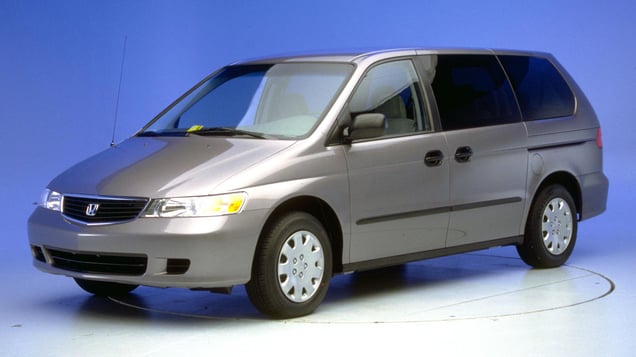
What truly distinguishes the Odyssey from competitors is its thoughtful engineering designed with longevity in mind. Critical components like the power steering system, braking system, and suspension maintain their integrity well beyond the 15-year mark when serviced according to Honda’s maintenance schedule.
The electrical systems demonstrate remarkable reliability, largely avoiding the complex electronic failures that plague many modern vehicles. The interior has proven equally resilient, with seat materials and cabin components holding up remarkably well to the daily abuse of family use.
Honda’s attention to detail is evident in high-stress areas like the sliding door tracks and hinges, which continue functioning smoothly long after competitors’ systems begin to fail. The fold-flat third-row seating revolutionary at its introduction maintains its functionality even decades later.
For families seeking exceptional value in a used minivan, the 2002-2004 model years offer the best combination of reliability and modern features.
With basic maintenance like regular oil changes, timing belt replacement at recommended intervals, and transmission care, these vehicles often become the stuff of family legend, serving multiple generations of drivers while requiring minimal major repairs.
3. Toyota Previa (1991-1997)
The Toyota Previa stands as perhaps the most unusual yet indestructible minivan ever to grace American roads. This egg-shaped marvel, produced from 1991 to 1997, has achieved cult status for its extraterrestrial styling and seemingly immortal mechanical heart.
What makes the Previa truly extraordinary is its unconventional mid-engine design, with the 2.4L four-cylinder engine mounted underneath the front seats at a 75-degree angle an engineering approach that created exceptional balance and interior space while simultaneously contributing to its legendary durability.
This unorthodox layout resulted in superior weight distribution and handling compared to front-heavy competitors, but more importantly, it created a powertrain that seems virtually impervious to time.
The engine’s accessible location made maintenance straightforward, while its simple design minimized potential failure points. Many Previas have surpassed 400,000 miles with only routine maintenance an astonishing figure that few modern vehicles can hope to match.
The supercharged variants (identified by the “S/C” badge) offer more spirited performance without sacrificing reliability, though the naturally aspirated models tend to demonstrate even greater longevity.
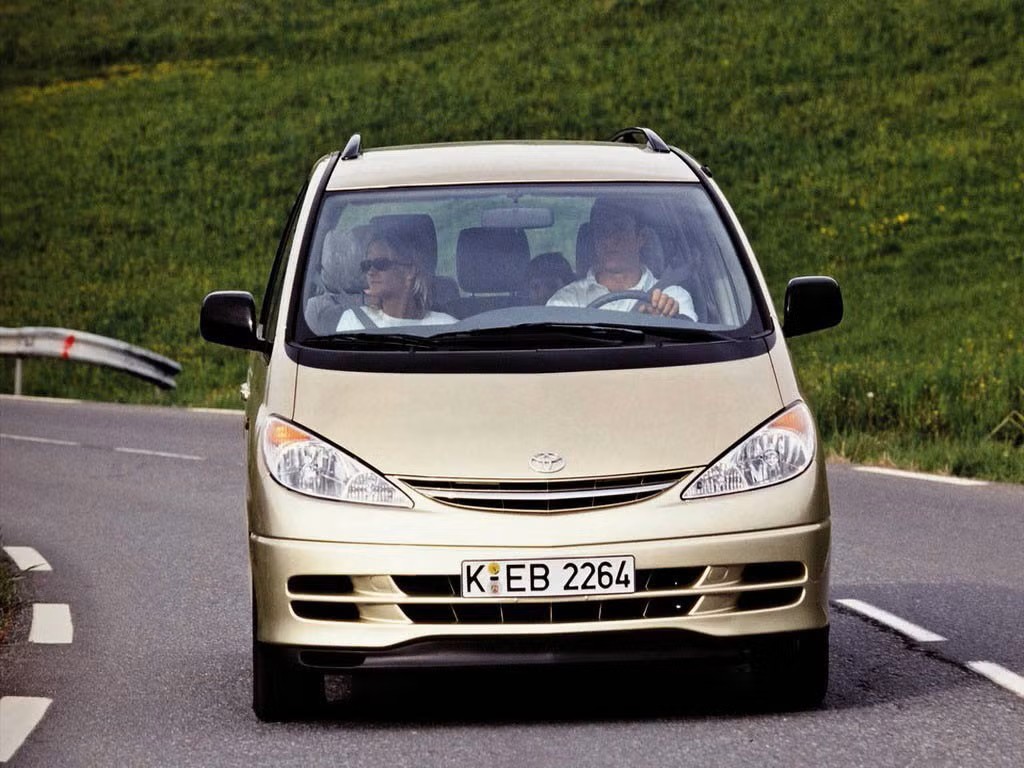
The available All-Trac all wheel drive system provides exceptional traction in adverse conditions, with its robust components continuing to function flawlessly decades later. Transmission issues are remarkably rare in both automatic and manual variants.
What truly sets the Previa apart is its resistance to the typical age-related issues that plague most vehicles. The interior materials particularly in higher trim levels resist wear exceptionally well, with many 30-year-old examples still featuring intact dashboards free from the cracking common in vehicles of this era.
The sliding door mechanisms remain smooth and functional long after competitors’ systems have failed. The Previa’s body construction further contributes to its longevity, with excellent corrosion resistance even in harsh climates.
The absence of complex electronics that plague modern vehicles means fewer potential failure points, with basic systems that any competent mechanic can service. While parts availability has diminished somewhat, a robust community of enthusiasts ensures continued support for these unique vehicles.
For families seeking a unique, exceptionally durable minivan with character to spare, the Toyota Previa represents an unconventional choice that will likely outlive most modern alternatives. Its space-age design has aged into timeless status, while its mechanical components seem determined to run indefinitely with basic care and maintenance.
4. Kia Sedona (2006-2014)
The Kia Sedona from the 2006-2014 generation represents one of the automotive industry’s greatest value propositions for families seeking long-term durability.
While Kia’s earlier reputation for quality lagged behind Japanese manufacturers, this second-generation Sedona marked a decisive turning point for the brand, establishing itself as a surprisingly robust family vehicle that routinely surpasses the 250,000-mile mark with proper maintenance.
The cornerstone of this minivan’s longevity is its 3.8L Lambda V6 engine an overbuilt powerplant that delivers consistent performance while demonstrating remarkable resistance to common age-related issues.
What makes the Sedona particularly noteworthy is its dramatic improvement over the first generation, with Kia addressing earlier shortcomings through substantially enhanced build quality and more robust components.
The timing chain design (rather than a belt) eliminates one major maintenance concern, allowing the engine to continue running trouble-free with basic oil changes and routine service. The transmission, often a weak point in minivans, proves surprisingly durable in the Sedona when maintained with regular fluid changes.
The Sedona’s electrical system demonstrates excellent resilience compared to more complex competitors, with straightforward engineering that avoids the mysterious electronic gremlins that often plague aging vehicles.
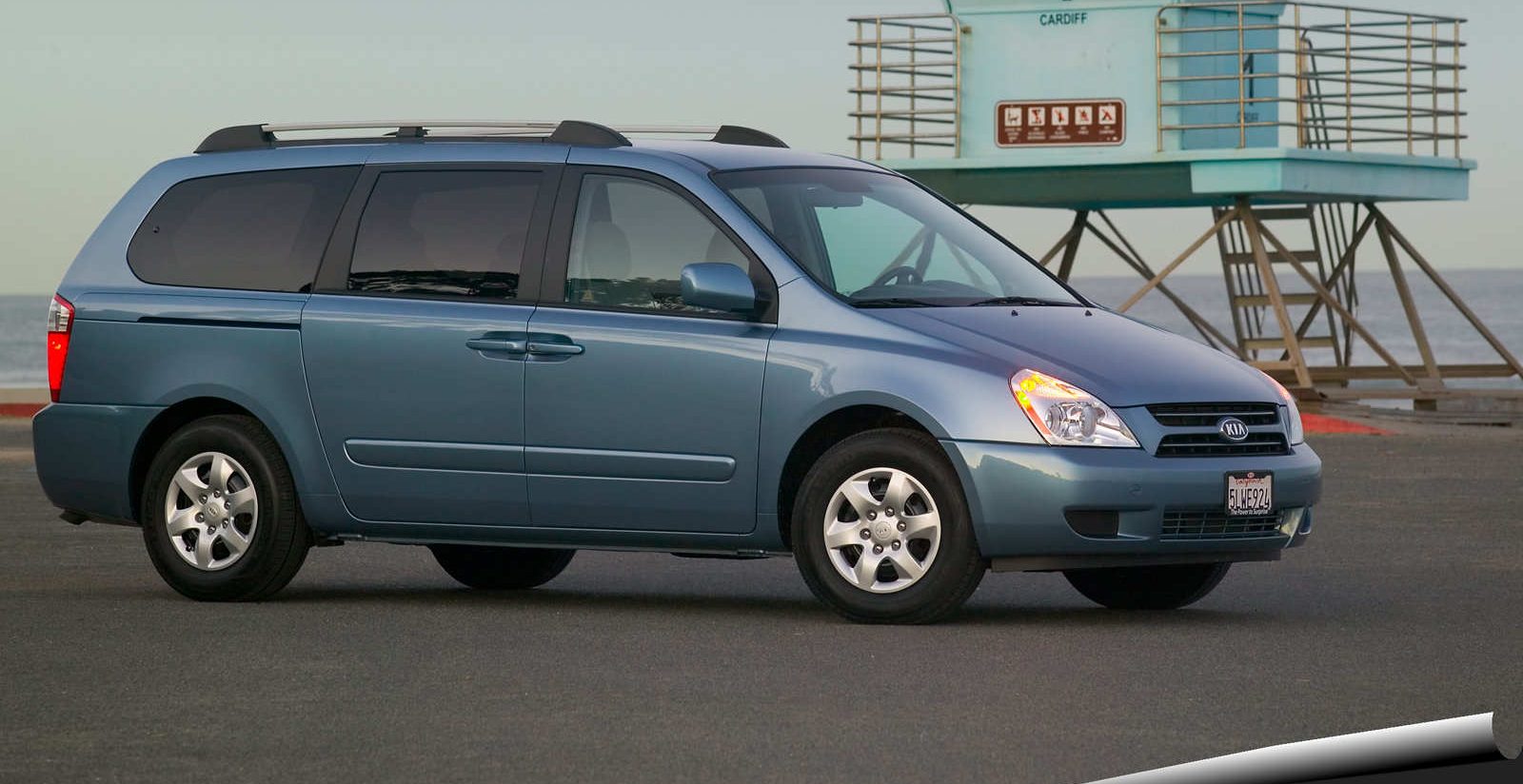
The climate control system a critical component for family comfort continues functioning reliably long after the 15-year mark, with robust compressors and straightforward controls that resist failure.
Interior durability stands as another Sedona strong point, with materials that withstand the punishment of family use far better than expected at its price point.
The sliding door mechanisms engineered with simplicity in mind avoid many of the complex failures that afflict more technologically advanced systems in competing minivans.
The basic suspension design, while not as sophisticated as some rivals, offers exceptional longevity with relatively inexpensive component replacement when eventually needed.
Perhaps most importantly, the Sedona delivers this durability at a fraction of the cost of its Japanese rivals. The substantial depreciation these vehicles experience when new creates exceptional value for used buyers seeking a reliable family hauler.
The 2011-2014 model years represent the sweet spot for reliability and features, with incremental improvements over earlier second-generation models.
For budget-conscious families who prioritize long-term dependability over luxury features, the second-generation Kia Sedona stands as compelling evidence that impressive durability doesn’t necessarily require a premium nameplate.
Also Read: 12 Compact SUVs With the Most Spacious Interiors Compared
5. Chrysler Town & Country/Dodge Grand Caravan (2008-2010)
The 2008-2010 Chrysler Town & Country and its mechanical twin, the Dodge Grand Caravan, represent a sweet spot of reliability in Chrysler’s minivan lineup that has demonstrated impressive longevity.
These specific model years avoided many of the teething problems of the earlier fifth-generation vans while benefiting from the continuous refinement of Chrysler’s long-standing minivan expertise.
At the heart of these vehicles’ durability is the optional 4.0L V6 engine, which has proven significantly more reliable than other powertrain options, regularly achieving mileage figures well beyond 200,000 miles with proper maintenance.
What distinguishes these particular model years is their position in the production cycle by 2008, Chrysler had addressed many of the early reliability issues that plagued the 2005-2007 models, particularly related to transmission performance and electrical systems.
The 62TE six-speed automatic transmission, when properly maintained with regular fluid changes, demonstrates remarkable durability compared to earlier iterations. While not immune to issues, these transmissions respond well to preventative maintenance and tend to provide reliable service throughout the vehicle’s extended lifespan.
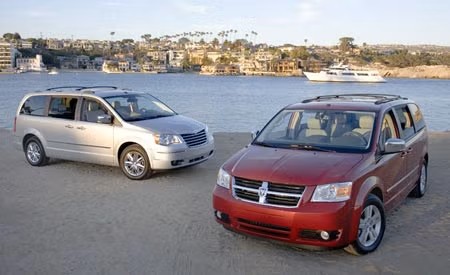
The interior functionality of these minivans continues to impress even 15+ years later, with the innovative Stow ‘n Go seating system maintaining its operation long after the competition’s more complex mechanisms have failed.
The relative simplicity of the second-row folding mechanism despite its ingenious design contributes to its long-term reliability. The materials used throughout the cabin demonstrate surprising resistance to wear, particularly in higher trim levels with leather seating surfaces.
Electrical system durability represents another strength in these specific model years, with Chrysler having addressed many of the gremlins that affected earlier versions.
The HVAC system critical for family comfort maintains reliable operation well beyond the 15-year mark in most examples, with robust components that resist failure even with continuous use.
Particularly impressive is the body integrity of these vans, with structural components and chassis elements that resist corrosion better than many competitors, even in harsh winter climates. With regular undercarriage washing and maintenance, these vehicles maintain their structural integrity remarkably well as they age.
For families seeking maximum functionality at a reasonable cost, these 2008-2010 Chrysler/Dodge minivans offer exceptional value in the used market, combining proven durability with innovative features that remain relevant today.
When properly maintained and purchased with a documented service history, these specific model years can provide reliable family transportation well beyond the 15-year milestone that defeats many competitors.
6. Volkswagen Routan (2009-2012)
The Volkswagen Routan is perhaps the most underappreciated durability champion in the minivan segment, offering European badge prestige with unexpected long-term reliability.
This often-overlooked model represents an intriguing case study in badge engineering essentially a Chrysler Town & Country/Dodge Grand Caravan underneath but with Volkswagen-specific suspension tuning, interior appointments, and exterior styling cues. This hybrid identity created a unique value proposition that continues paying dividends for savvy used-vehicle shoppers seeking long-term reliability.
The Routan’s durability stems primarily from its Chrysler-sourced powertrains particularly the 4.0L V6 engine available in 2009-2010 models and the later 3.6L Pentastar V6 introduced for 2011-2012. Both engines have demonstrated excellent longevity when maintained according to schedule, regularly exceeding 200,000 miles without major internal issues.
The 62TE six-speed automatic transmission, while not without occasional issues, proves remarkably durable with regular fluid changes a maintenance item frequently overlooked but critical for extended transmission life.
What sets the Routan apart from its Chrysler siblings is Volkswagen’s influence on the suspension tuning, which delivers a notably more composed ride quality.
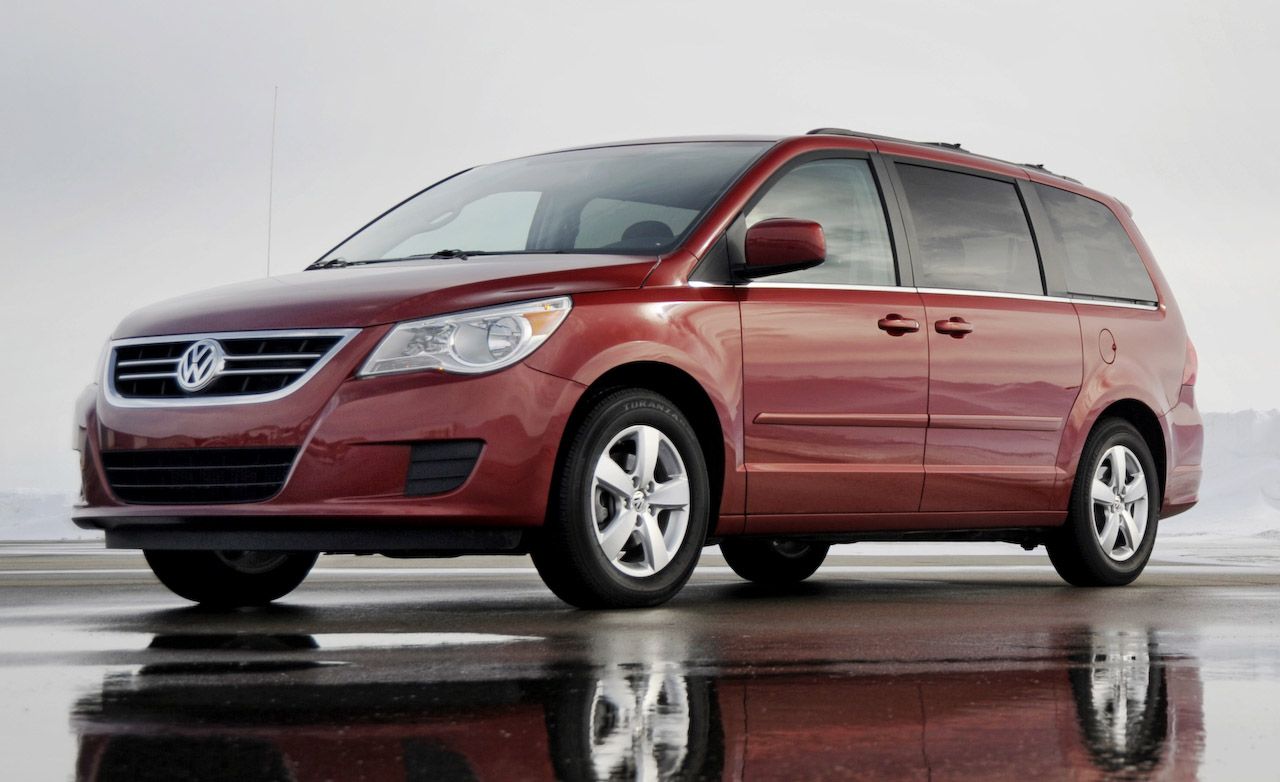
This refined suspension not only improves driving dynamics but also demonstrates exceptional component longevity, with bushings, ball joints, and struts maintaining their integrity well beyond the 15-year mark.
The slightly stiffer settings help avoid the premature suspension wear that often afflicts softer-sprung competitors. Interior quality represents another Routan advantage that contributes to its long-term durability.
Volkswagen specified higher-grade materials throughout the cabin, with more robust seat fabrics and superior dashboard components that resist wear and cracking better than those in equivalent Chrysler products.
The elimination of Chrysler’s Stow ‘n Go seating replaced with more substantial fixed second-row captain’s chairs removed a potential failure point while providing superior comfort and durability.
The relative rarity of the Routan creates a compelling value proposition in the used market. These vans typically sell for less than equivalent Chrysler products despite their superior refinement and comparable reliability.
The 2011-2012 models with the Pentastar V6 represent the sweet spot for reliability and features, having benefited from Chrysler’s continuous refinement of the platform while adding Volkswagen’s distinctive touches.
For families seeking a reliable, long-lasting minivan with European flair and American practicality, the Volkswagen Routan offers a unique combination of durability, refinement, and value.
Regular maintenance according to Volkswagen’s schedule ensures these vans will continue serving family needs well beyond the 15-year milestone, often with fewer issues than both their American cousins and more expensive European alternatives.
7. Ford E-Series Passenger Van (1992-2014)
The Ford E-Series Passenger Van, while technically not a traditional minivan, earns its place on this list through unparalleled durability that makes it the ultimate choice for large families prioritizing longevity above all else.
This venerable people-mover, available in configurations seating up to 15 passengers, represents perhaps the most overbuilt family transportation option ever mass-produced. Its body-on-frame construction a rarity in modern passenger vehicles provides exceptional structural integrity that resists the twisting forces that eventually compromise unibody vehicles.
The E-Series’ legendary durability stems primarily from its commercial vehicle roots, with Ford designing these vans primarily for punishing fleet use. This heavy-duty engineering translates directly to exceptional longevity in family service, where the vehicle typically endures far less stress than its design parameters anticipate.
The powertrain options particularly the 5.4L V8 and 6.8L V10 engines demonstrate extraordinary resilience, regularly achieving mileage figures approaching or exceeding 400,000 miles with basic maintenance.
The 4R100 and later 5R110W automatic transmissions, while not immune to issues, prove remarkably robust when maintained with regular fluid changes.
What truly distinguishes the E-Series is its simplicity relative to more modern passenger vans. The straightforward engineering approach minimizes potential failure points, with basic systems that any competent mechanic can diagnose and repair without specialized equipment.
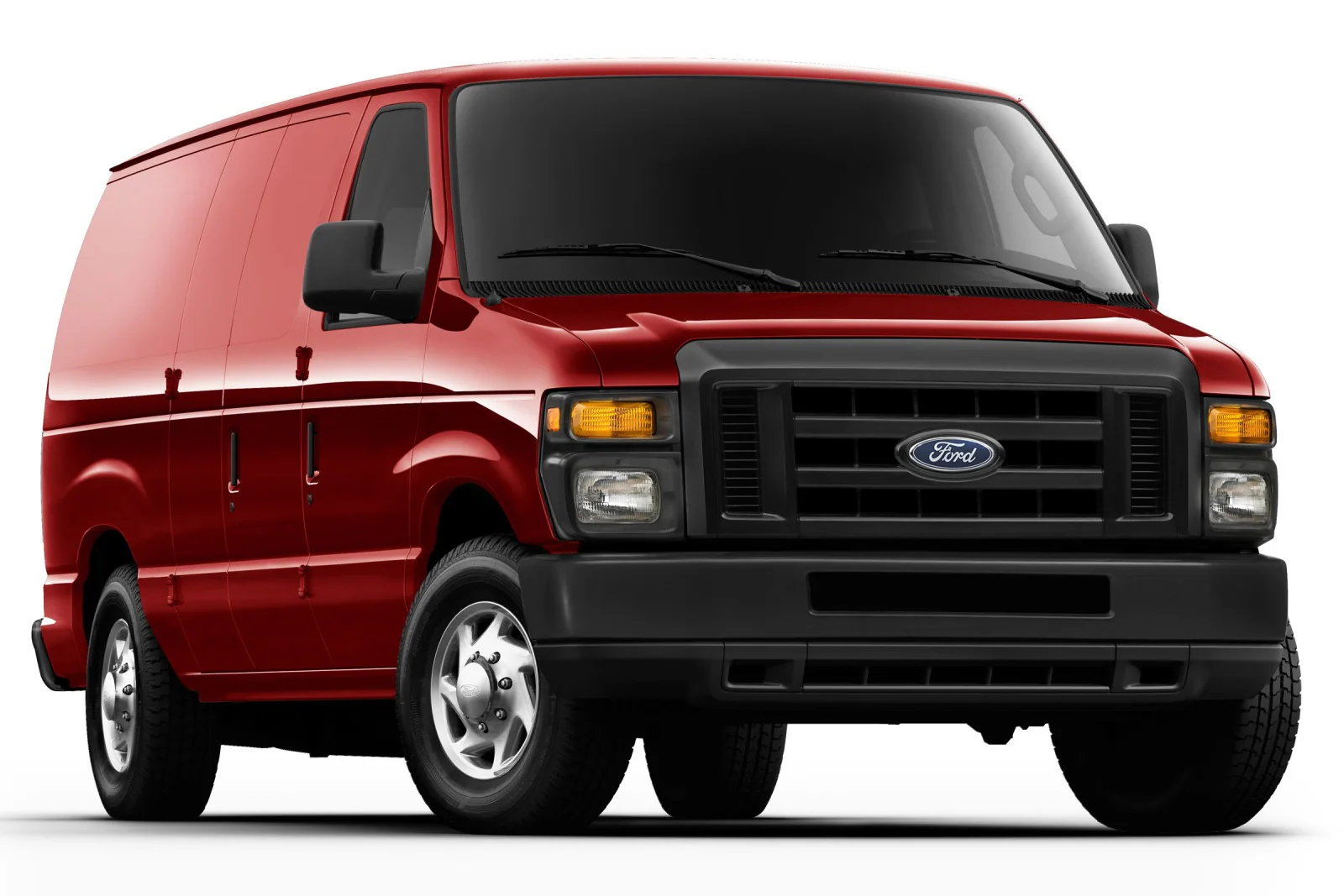
The electrical systems demonstrate remarkable resilience, avoiding the complex electronic gremlins that plague more technologically sophisticated vehicles as they age. The HVAC system critical for passenger comfort in a large-capacity vehicle continues functioning reliably decades after manufacture.
Interior durability represents another E-Series strength, with commercial-grade materials throughout the cabin that withstand abuse far better than those found in traditional minivans.
The simplified seating mechanisms avoid the complex failures that afflict fold-flat systems in conventional family vans. While certainly not luxurious, these utilitarian appointments continue functioning properly long after more refined interiors have deteriorated.
For extremely large families or those who prioritize maximum durability over modern amenities, the E-Series Passenger Van particularly 2003-2014 models with the updated chassis and improved powertrains offer unmatched longevity.
The 2009-2014 models represent the sweet spot of reliability and modern features, with incremental improvements while maintaining the fundamental durability that defines the platform.
These vans frequently serve multiple generations of family use, often transitioning to commercial service for another decade after their family duties conclude a testament to their extraordinary engineering and build quality.
8. Mazda MPV (2000-2006)
The 2000-2006 Mazda MPV stands as an often-overlooked gem in the durable minivan category, combining Japanese reliability with engaging driving dynamics rarely found in family haulers.
This second-generation MPV departed significantly from its predecessor’s rear wheel drive platform, adopting a more conventional front-wheel-drive layout but retaining Mazda’s commitment to driver engagement.
What makes this van particularly noteworthy for longevity is its thoughtful engineering focuses on simplicity and durability rather than trend-following complexity.
The heart of the MPV’s reliability is its powertrain, particularly in 2002-2006 models equipped with the 3.0L V6 engine and improved five-speed automatic transmission.
This combination delivers adequate performance while demonstrating remarkable durability, routinely surpassing 250,000 miles with regular maintenance.
The timing chain design (rather than a belt) eliminates one major maintenance concern, allowing the engine to continue running trouble-free with basic oil changes. The transmission, often a weak point in minivans, proves surprisingly robust in the MPV when maintained with regular fluid services.
What truly distinguishes the MPV from competitors is its right-sized approach to family transportation. Slightly smaller than the segment leaders, the MPV’s more compact dimensions contribute to its long-term durability by reducing weight and stress on components.
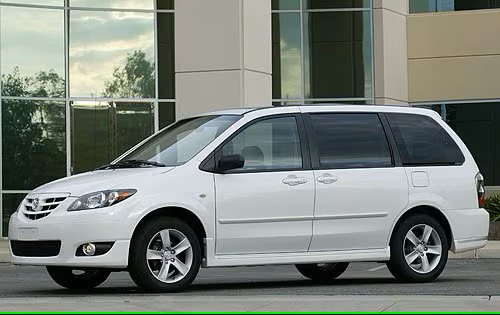
The suspension system tuned with Mazda’s characteristic focus on handling not only provides a more engaging driving experience but also demonstrates exceptional component longevity, with bushings and ball joints that maintain their integrity well beyond the 15-year mark.
The MPV’s Roll-Down Tumble-Under rear seat design represents a study in effective simplicity. Unlike more complex folding systems that eventually develop issues, this straightforward mechanism continues functioning properly decades after manufacture.
The dual sliding doors with optional power operation utilize a simpler design than many competitors, resulting in fewer long-term reliability concerns. The interior materials throughout demonstrate surprising resilience to wear, particularly in GT trim levels.
Electrical system integrity represents another MPV strong point. The relatively straightforward electronics avoid many of the complex failures that afflict more technology-laden competitors as they age.
The climate control system critical for family comfort continues functioning reliably long after the 15-year mark in most examples, with robust components that resist failure even with continuous use.
For families seeking a reliable, right-sized van with engaging driving dynamics, the 2004-2006 MPV models represent the sweet spot, having benefited from continuous refinement while maintaining the fundamental durability that defines the platform.
Regular maintenance according to Mazda’s schedule ensures these vans will continue serving family needs well beyond the 15-year milestone, often with fewer issues than their larger, more complex competitors.
9. GMC Safari/Chevrolet Astro (1995-2005)
The GMC Safari and its mechanical twin, the Chevrolet Astro, represent perhaps the most underappreciated workhorses in the family van segment, combining pickup truck durability with passenger-carrying capability in a uniquely American package.
These rear wheel drive (or optional all-wheel-drive) vans, particularly those produced from 1995-2005, have demonstrated extraordinary longevity that frequently surpasses more conventional front wheel drive minivans.
Their body on frame construction increasingly rare in passenger vehicles provides exceptional structural integrity that resists the twisting forces that eventually compromise unibody designs.
At the heart of these vans’ legendary durability is their powertrain, centered around the nearly indestructible 4.3L Vortec V6 engine. This powerplant, essentially a small-block V8 with two cylinders removed, delivers truck-like torque while demonstrating remarkable resilience, regularly achieving mileage figures exceeding 300,000 miles with basic maintenance.
The 4L60-E automatic transmission, while not immune to issues, proves remarkably robust when maintained with regular fluid changes a maintenance item frequently overlooked but critical for extended transmission life.
What truly distinguishes the Safari/Astro from conventional minivans is their substantial towing capacity and available all-wheel-drive system. These capabilities, rarely found in traditional minivans, provide exceptional versatility for active families who require both passenger space and utility.
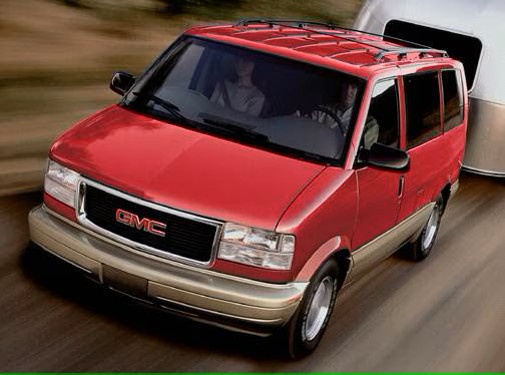
The AWD system—featuring a viscous-coupling center differential continues functioning properly decades after manufacture, providing secure traction in adverse conditions without the complexity or electronic components that plague modern systems.
Interior durability represents another Safari/Astro strength, with commercial-grade materials throughout the cabin that withstand abuse far better than those found in more luxurious competitors.
The simplified seating mechanisms avoid the complex failures that afflict fold-flat systems in conventional minivans. While certainly not plush, these utilitarian appointments continue functioning properly long after more refined interiors have deteriorated.
The relative simplicity of these vans compared to more technologically advanced competitors contributes significantly to their longevity. The straightforward engineering approach minimizes potential failure points, with basic systems that any competent mechanic can diagnose and repair without specialized equipment.
The electrical systems demonstrate remarkable resilience, avoiding the mysterious electronic gremlins that plague more sophisticated vehicles as they age.
For families who prioritize maximum durability over modern amenities, particularly those living in rural areas or with active outdoor lifestyles, the Safari/Astro offers unmatched longevity combined with genuine utility.
The 2003-2005 models represent the sweet spot of reliability and features, benefiting from continuous refinement while maintaining the fundamental durability that defines the platform. These vans frequently serve multiple generations of family use a testament to their extraordinary engineering and build quality.
10. Nissan Quest (2004-2009)
The 2004-2009 Nissan Quest represents one of the most distinctive and unexpectedly durable options in the minivan segment, combining avant-garde styling with remarkable long-term reliability.
This third-generation Quest marked a dramatic departure from conventional minivan design, featuring a skylight-equipped roof, centrally-mounted instrument cluster, and striking exterior styling that still turns heads decades later.
While initially polarizing, this bold approach has aged into a distinctive character that sets it apart from more anonymous competitors, with the mechanical underpinnings proving surprisingly robust beyond the 15-year mark.
The cornerstone of the Quest’s durability is its powertrain, centered around Nissan’s proven VQ35DE 3.5L V6 engine the same basic design found in the renowned 350Z sports car.
This powerplant delivers spirited performance while demonstrating exceptional longevity, routinely surpassing 250,000 miles with basic maintenance.
The timing chain design eliminates one major maintenance concern, allowing the engine to continue running trouble-free with regular oil changes.
The five-speed automatic transmission, while not immune to issues, proves remarkably durable when maintained with regular fluid services a critical maintenance item that ensures extended transmission life.
What distinguishes the Quest from competitors is its unique structural design and suspension tuning that provides car-like handling rare in the minivan segment.
The independent rear suspension a feature not universal among minivans of this era not only improves ride quality but also demonstrates exceptional component longevity.
The suspension bushings, ball joints, and control arms maintain their integrity remarkably well beyond the 15-year mark, contributing to the van’s continued driving pleasure even as it ages.
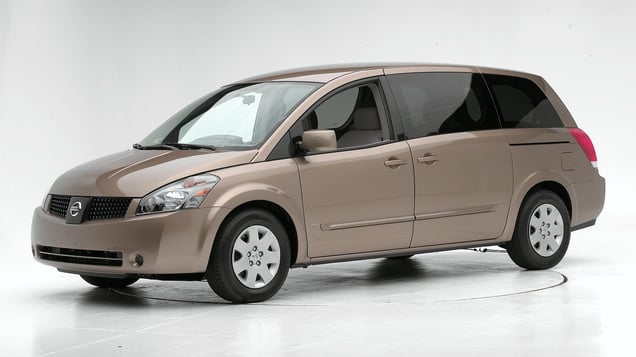
Interior functionality represents another Quest strength that contributes to its long-term appeal. The fold-flat seating system while not as innovative as some competitors employs a straightforward design that maintains its operation decades after manufacture.
The sliding door mechanisms utilize a robust design that avoids many of the issues that plague more complex systems. The interior materials, particularly in higher trim levels, demonstrate surprising resistance to wear despite the unique design elements.
Electrical system integrity stands as another Quest advantage, with relatively straightforward electronics that avoid many of the complex failures that afflict more technology-laden competitors as they age.
The climate control system critical for family comfort in a vehicle with an extensive glass area continues functioning reliably long after the 15-year mark in most examples.
For families seeking a reliable, distinctive minivan that stands apart from more conventional options, the 2007-2009 Quest models represent the sweet spot for reliability and features, having benefited from continuous refinement while maintaining the fundamental durability that defines the platform.
With regular maintenance according to Nissan’s schedule, these vans continue serving family needs well beyond the 15-year milestone, often with fewer issues than their more conservatively styled competitors.
Also Read: 10 Luxury Sedans Offering the Most Advanced Sound Systems

